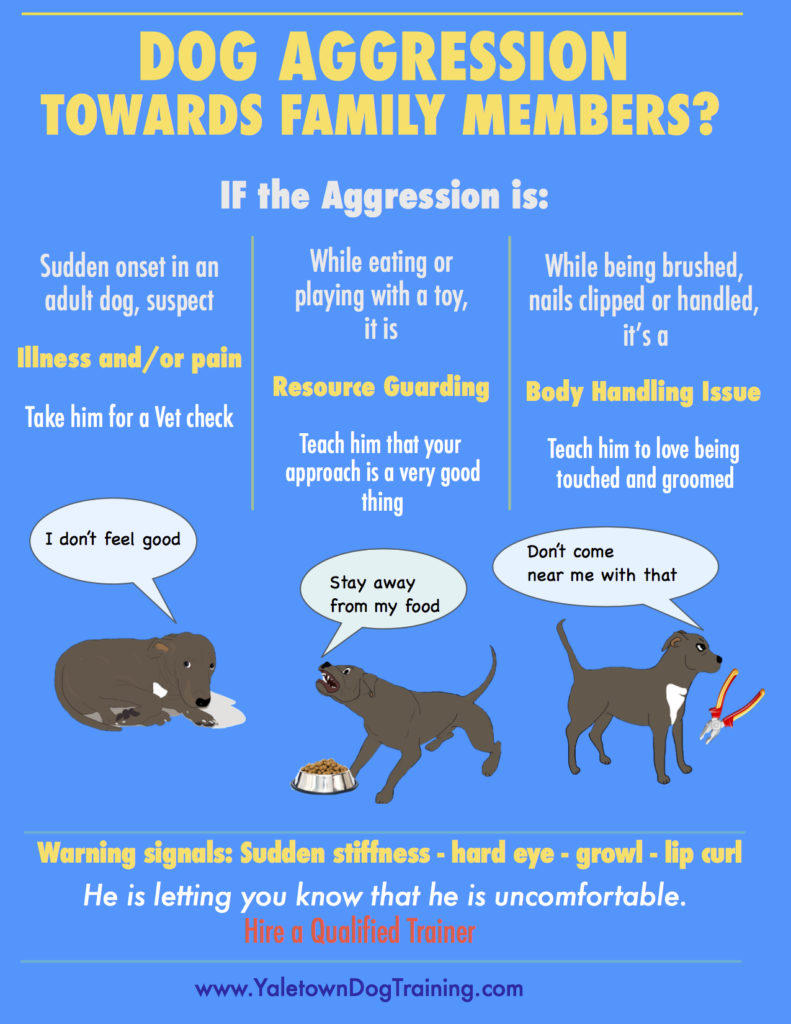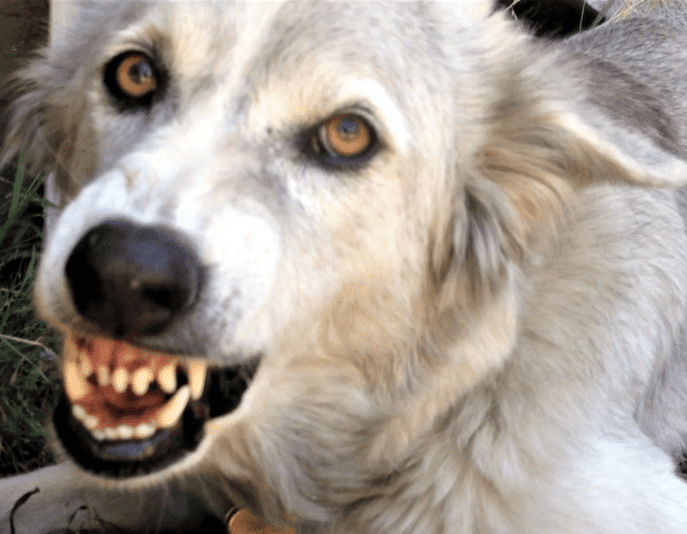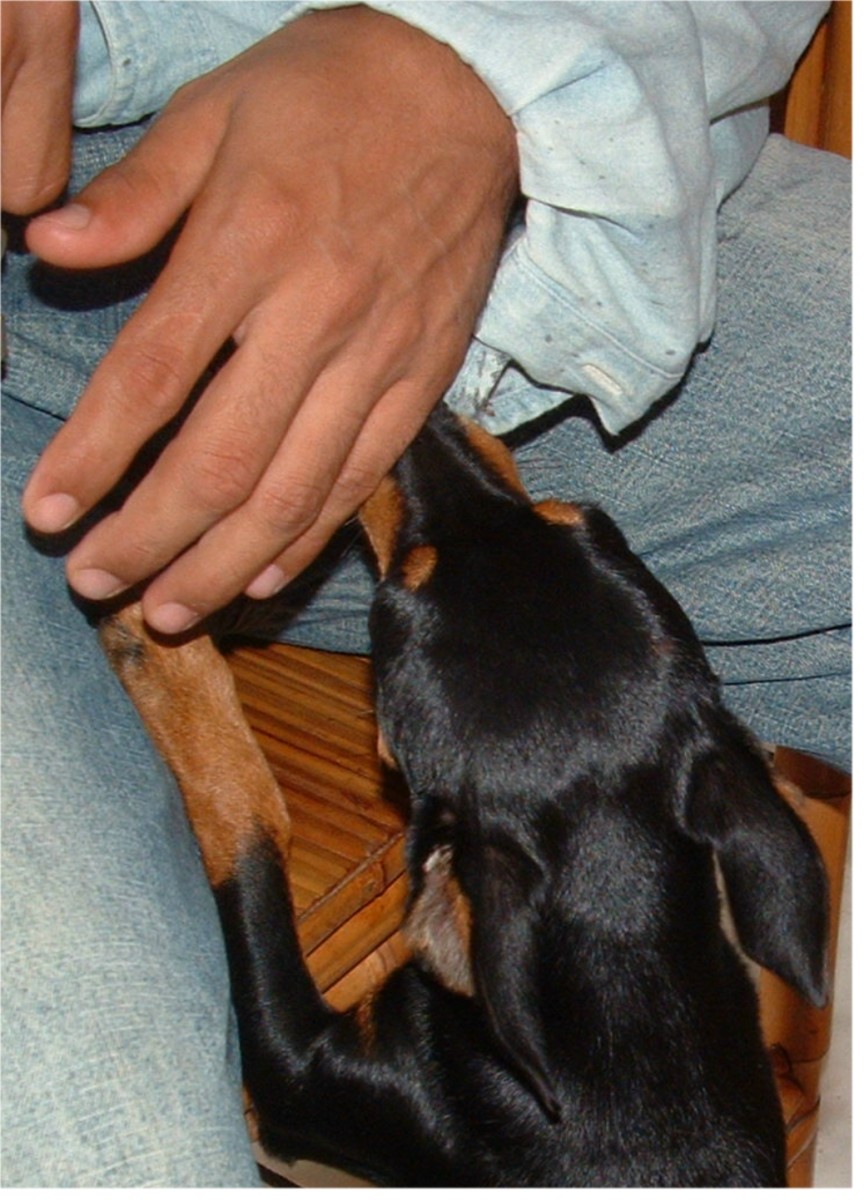It’s important to watch for signs of fear or discomfort in your dog’s body language. If your dog growled at you when you moved her, it may indicate she felt threatened or uneasy.
Understanding your dog’s behavior is key to fostering a happy and healthy relationship. Dogs communicate through their actions, and growling can be a sign of fear, anxiety, or the need for space. It’s important to approach the situation with patience and empathy, and to avoid any actions that may escalate the dog’s discomfort.
We’ll explore why a dog may growl when moved, how to interpret their behavior, and steps you can take to address the issue and ensure the safety and well-being of both you and your pet.

Credit: yaletowndogtraining.com
Understanding Dog Behavior
Understanding dog behavior is crucial for pet owners, especially when it comes to interpreting their actions. If your dog growled when you moved her, it may indicate discomfort or fear, highlighting the importance of recognizing and addressing such behaviors to maintain a safe and harmonious relationship.
Understanding Dog BehaviorCanine Body LanguageWhen it comes to understanding our furry friends, deciphering their body language is key. Dogs communicate primarily through their body postures, facial expressions, and vocalizations. Observing their signals can help us interpret their emotions and needs. Whether it’s a wagging tail, pricked ears, or a growl, these cues provide insights into what our dogs are trying to communicate.Signs of Fear or AnxietyJust like humans, dogs can experience fear and anxiety in certain situations. It’s essential to recognize the signs of these emotions to provide the necessary support for our furry companions. Here are some indicators that your dog may be feeling fearful or anxious:1. Body language: A tucked tail, lowered posture, and crouched position indicate uneasiness. Trembling or shaking may also be observed.2. Facial expressions: A wrinkled forehead, dilated pupils, and wide eyes can be signs of distress or fear.3. Vocalizations: Whining, whimpering, or excessive barking can be your dog’s way of expressing fear or anxiety.Understanding TerritorialityDogs are naturally territorial animals. They have an innate instinct to protect their possessions and their space. Sometimes, growling can be a sign of territoriality. It is crucial to remember that territorial behavior does not necessarily equate to aggression. Dogs may growl when they feel their personal space is being invaded.To better understand territorial behavior in dogs, here are a few key points:1. Possessiveness: Dogs may growl when someone tries to take away their toys, food, or favorite resting spot.2. Guarding behavior: Some dogs may growl to protect areas they consider their territory, such as their bed, crate, or even their owner.3. Warning signs: Growling is often a warning sign that your dog is uncomfortable or feels threatened. It’s vital to give them the space they need and respect their boundaries.4. Professional help: If your dog’s growling is excessive, escalates into aggression, or consistently occurs in non-threatening situations, consulting a professional dog trainer or behaviorist can be helpful in addressing the issue.In conclusion, understanding dog behavior is crucial for building a strong bond with our four-legged companions. By paying attention to their body language, recognizing signs of fear or anxiety, and understanding territorial behavior, we can better communicate with our dogs and provide them with a safe and secure environment. So, the next time your dog growls when you move her, take a step back, observe her cues, and respond accordingly to ensure her happiness and well-being.Reasons For Growling
When your dog growls at you, it can be a concerning and confusing experience. Understanding the reasons behind your dog’s growling is crucial to address any underlying issues and prevent potential conflicts. Growling is a form of communication for dogs, and it can stem from various causes, including fear, territorial behavior, and pain or discomfort.
Fear Or Anxiety
Dogs may growl when they are fearful or anxious. Loud noises, unfamiliar environments, or encountering new people or animals can trigger fear-based growling. It’s essential to recognize your dog’s body language and provide a safe and secure environment to alleviate their anxiety. Gradual desensitization and positive reinforcement can help diminish fear-induced growling.
Territorial Behavior
Some dogs may growl to assert their perceived territory. This can occur when someone approaches their food, toys, resting place, or when they feel threatened by unfamiliar individuals or animals entering their space. Establishing consistent boundaries, proper training, and reinforcing positive interactions with others can help manage territorial growling.
Pain Or Discomfort
Growling can also be a sign that your dog is experiencing pain or discomfort. Physical ailments, such as injuries, arthritis, or dental issues, can cause dogs to express their distress through growling. It’s crucial to monitor your dog’s health, seek veterinary care, and ensure their comfort to address any underlying pain-related growling.
Reacting To Growling
When your dog growls at you, it can be a surprising and concerning experience. Understanding how to react to your dog’s growling is crucial for maintaining a positive and safe relationship with your pet. Here are some essential strategies for reacting to growling that can help improve the situation and maintain trust between you and your furry friend.
Stay Calm And Assess The Situation
Upon hearing your dog growl, it’s essential to remain calm and avoid reacting with anger or fear. Take a moment to assess the situation by considering what might have triggered the growling. Look for potential sources of discomfort or fear that could be causing your dog to growl, such as physical pain or feeling threatened.
Give Space And Avoid Punishment
After observing the situation, it’s crucial to give your dog space by allowing her to move away from the trigger if possible. Avoid punishing your dog for growling, as this can exacerbate the issue and create a negative association with expressing her discomfort. Instead, focus on removing the trigger and creating a calm environment to reduce her stress.
Seek Professional Help If Necessary
If your dog’s growling persists or if you are unsure about the underlying cause, it’s advisable to seek professional help from a qualified dog behaviorist or trainer. Professional guidance can help you understand your dog’s behavior more deeply and implement effective strategies to address the root cause of the growling, ensuring a safe and harmonious relationship between you and your beloved pet.
Building Trust And Training
Building trust and training are crucial when it comes to addressing behavioral issues in our furry friends. If your dog growled at you when you moved her, it’s important to understand the underlying reasons behind this behavior and take the necessary steps to correct it. In this article, we will explore effective methods to rebuild trust, positive reinforcement training techniques, creating a safe environment, and establishing clear boundaries.
Positive Reinforcement Training
Positive reinforcement training is a highly effective technique that focuses on rewarding desired behaviors rather than punishing unwanted ones. By using rewards such as treats, praise, or play, you can motivate your dog to behave in the way you desire. This helps to build a strong bond between you and your furry companion, increasing trust and reducing the likelihood of aggressive reactions.
When addressing the issue of growling when moved, it’s important to implement positive reinforcement techniques. For instance, when you need to move your dog, begin by giving her a small treat before gently and gradually relocating her. This positive association will help her associate being moved with pleasant experiences, reducing anxiety and the likelihood of growling.
Creating A Safe Environment
A safe environment plays a crucial role in preventing anxiety and fear-related behaviors in dogs. Ensure your home provides a secure and comfortable space for your furry friend. Designate a cozy corner or a comfortable dog bed where she can relax undisturbed. This allows your dog to have her own safe space and reduces the chances of feeling threatened when moved.
Furthermore, avoid sudden movements or loud noises when approaching your dog. This can startle her and heighten her anxiety, potentially triggering defensive behaviors such as growling. It’s important to approach her calmly, using slow and deliberate movements to create a sense of safety and security.
Establishing Clear Boundaries
Dogs thrive on clear boundaries and consistent expectations. Teaching your dog basic commands such as “sit,” “stay,” and “leave it” can provide structure and guidance, which can help alleviate anxiety and improve overall obedience. This clarity establishes your role as the leader and creates a sense of security for your dog.
When moving your dog, it’s essential to reinforce these boundaries by issuing commands such as “stay” or “come” before you gently relocate her. This reinforces your role as the one in control and helps her understand that she can trust your commands, reducing the need for defensive behaviors like growling.
To sum up, addressing the issue of growling when moving your dog requires a combination of trust-building and effective training techniques. By utilizing positive reinforcement, creating a safe environment, and establishing clear boundaries, you can work towards resolving this behavior and strengthen the bond between you and your furry companion.
Seeking Advice From Experts
When your beloved dog growls at you, it can be quite alarming and leave you feeling confused or even hurt. It’s important to remember that growling is a form of communication for dogs, and they may exhibit this behavior for various reasons. To understand and address this issue, seeking advice from experts in the field of animal behavior is crucial. Here are three ways you can find guidance in handling your dog’s growling:
Consulting A Veterinarian Or Animal Behaviorist
If your dog’s growling is becoming consistent or escalating, it is wise to consult a veterinarian or an animal behaviorist. These professionals have in-depth knowledge and experience in dealing with dog behavior issues. They can assess your dog’s overall health and determine if there are any underlying medical conditions contributing to the growling. Additionally, they can provide valuable insights into the dog’s breed characteristics and offer personalized advice on behavior modification techniques.
Joining Dog Training Classes
Another effective way to address growling behavior is by enrolling your dog in dog training classes. These classes not only focus on basic obedience training but also provide guidance on managing unwanted behaviors. Trained professionals can help you understand the triggers for your dog’s growling and teach you how to respond appropriately. By learning effective communication techniques and positive reinforcement methods, you can develop a stronger bond with your dog and address their growling behavior effectively.
Researching And Reading Books On Dog Behavior
Reading books on dog behavior is an excellent way to educate yourself and gain a deeper understanding of your dog’s growling. Look for reputable authors and trainers who specialize in dog behavior and training. These books often provide insights into the psychology of dogs, common behavioral issues, and tips on modifying unwanted behaviors. They can equip you with the knowledge and strategies needed to address your dog’s growling in a compassionate and effective manner.
Remember, seeking advice from experts is essential when dealing with your dog’s growling. Consulting a veterinarian or animal behaviorist, joining dog training classes, and researching through books are all valuable resources that can provide you with the guidance and knowledge to address this issue appropriately. By understanding the underlying causes and implementing appropriate behavior modification techniques, you can work towards creating a harmonious relationship with your furry friend.

Credit: catanddoghouse.com

Credit: pethelpful.com
Frequently Asked Questions Of My Dog Growled At Me When I Moved Her
Why Did My Dog Growl At Me?
Your dog may have growled at you because she felt threatened, scared, or protective. It’s important to assess the situation to understand why your dog reacted this way. Consult with a professional dog trainer or behaviorist to address any underlying issues and ensure your dog’s safety and well-being.
What Should I Do If My Dog Growls At Me?
If your dog growls at you, it’s crucial not to punish or scold her. Instead, try to determine the cause of her growling and address any underlying issues. Consult with a professional dog trainer or behaviorist to develop a behavior modification plan and practice positive reinforcement techniques to promote trust and reduce aggression.
Can I Fix My Dog’s Growling Behavior?
With proper training and behavior modification, it is possible to address your dog’s growling behavior. However, it is important to consult with a professional dog trainer or behaviorist to assess the situation and tailor a training plan that suits your dog’s specific needs.
Consistency, patience, and positive reinforcement are key to successfully modifying your dog’s behavior.
Conclusion
Understanding why your dog growled at you when you moved her is key to strengthening your bond. By observing her body language and seeking professional advice, you can address any fear or discomfort she may be experiencing. Remember, patience, consistency, and positive reinforcement are essential in building trust and ensuring a happy and harmonious relationship with your furry friend.



